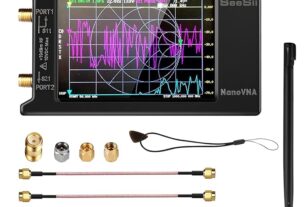Introduction
The Inverted V antenna is a popular choice among amateur radio operators due to its simplicity, effectiveness, and ease of installation. To ensure optimal performance, accurate calculation of the antenna’s lengths is crucial. In this article, we will guide you through the step-by-step process of calculating the lengths for an Inverted V antenna.
Determining the Frequency
First, determine the desired operating frequency (in MHz) for your antenna. This will help you calculate the wavelength, which is essential for determining the antenna’s lengths.
Calculating the Wavelength
Use the following formula to calculate the wavelength (in meters):
Wavelength (λ) = 300 / Frequency (MHz)
Calculating the Total Length
The total length of the Inverted V antenna is approximately equal to the wavelength. However, to ensure optimal performance, we’ll use 95% of the wavelength:
Total Length = 0.95 x Wavelength (λ)
Calculating the Leg Lengths
The Inverted V antenna consists of two legs, each with a length of:
Leg Length = Total Length / 2
Calculating the Apex Angle
The apex angle (α) is critical for optimal performance. A general rule of thumb is to use an angle between 90° and 120°. For this example, we’ll use 100°:
Apex Angle (α) = 100°
Calculating the Leg Slope
Using the apex angle, calculate the leg slope (in degrees):
Leg Slope = (180° – Apex Angle) / 2
= (180° – 100°) / 2
= 40°
Calculating the Support Height
Determine the support height (in meters) based on the leg slope and leg length:
Support Height = Leg Length x sin(Leg Slope)
= Leg Length x sin(40°)
Example Calculation
Frequency (MHz): 14.2
Wavelength (λ): 300 / 14.2 = 21.13 meters
Total Length: 0.95 x 21.13 = 20.07 meters
Leg Length: 20.07 / 2 = 10.035 meters
Apex Angle (α): 100°
Leg Slope: (180° – 100°) / 2 = 40°
Support Height: 10.035 x sin(40°) = 6.44 meters
Conclusion
Accurate calculation of the lengths for an Inverted V antenna is crucial for optimal performance. By following these steps and using the provided formulas, you can ensure your antenna is properly sized for your desired operating frequency. Happy building!

